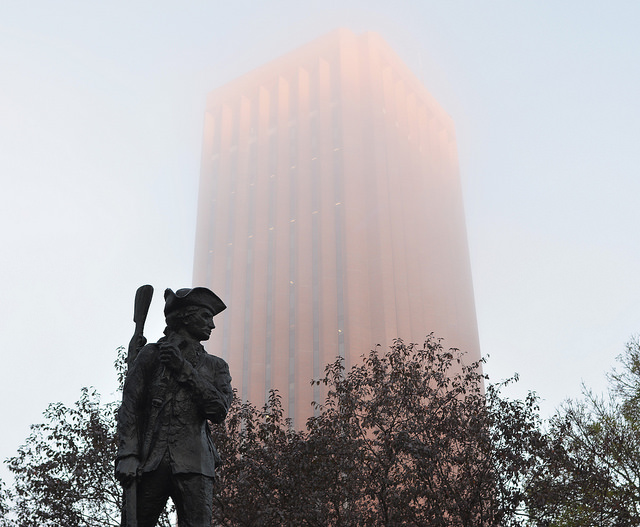In today’s hectic political situation, there is almost nowhere you can go to escape the constant inundation of talking about and dissecting American politics, whether it be the president, his administration, Congress’s difficulties, the upcoming election or an infinite number of other topics constantly rehashed and redistributed by anyone with an opinion. For many, there has never been a time in their life where politics has felt more divisive. Everyone seems to be screaming within their own echo chamber, completely unaware that people have differing opinions. Ideologically, conservatives and liberals seem to be more at odds with one another than in recent decades. All of these issues are smaller subsets of a much larger phenomenon, polarization. It is imperative that polarization is lessened and the ever-growing gap between opposing ideologies is bridged in order for our country to move forward.
So how exactly do we define polarization? Polarization simply means the divergence of political viewpoints to opposing extremes. Polarization is not a new development. In fact, it has always been prevalent to varying degrees. The levels of polarization experienced today are not entirely unique. At various times polarization has reached levels close to that of today’s, most notably during the late 19th century to the early 20th century. However, modern day Congress is largely considered to be the most polarized time in recent history, as the 1930s to mid-1970s were characterized by low polarization and bipartisanship in Congress. This means that there existed many liberal Republicans and conservative Democrats, with many instances of party lines being crossed in order to pass specific legislation. This is pretty much impossible nowadays, with virtually no Democrat being conservative and no Republican being liberal in Congress.
Polarization doesn’t just stay in Washington; it spreads throughout the whole country. According to the Pew Research center, 92 percent of Republicans find themselves to the right of Democrats, and 94 percent of Democrats find themselves to the left of Republicans. This means that there is little overlap in beliefs between the parties, meaning that overall the principles of each party have become incredibly different from one another. The parties represent the country as a whole, meaning the public themselves has started to become more and more polarized. This is not to say that entire swaths of the country have become ideological extremists bent on destroying one another, but rather that the public views each other differently depending on their political affiliations. In 2014, 27 percent of Democrats viewed the Republican Party as a threat to the nation’s well-being, while 36 percent of Republicans thought the same thing about Democrats. Obviously, that’s not great for keeping a country together, and these sentiments have surely grown since the 2016 election.
When we do consider the most political members of the country, things don’t get any better.The most politically engaged members of both sides have very different views. They have opposing views on immigration, women’s issues, religion, sexuality and even morals and how to best live life. Many of these political extremists are consistent media consumers, which has a multitude of its own separate problems caused by the onset of an extremely polarized society. In the ever-advancing world of the internet and social media, the public has grown unhappy with polarized news sources that are biased and inaccurate in their reporting.
All of these issues have added to a general distrust and exhaustion. People don’t want to talk about politics every day. People certainly don’t want to argue over it all the time. So, what do we do in order to fix it? It seems an impossible hurdle to climb. There have been small efforts here and there, however. Many believe reforming the primary election systemwill help fix the way in which we elect officials. The general goal is to lessen the money needed to run, as well as give rise to candidates that hold bipartisan sentiments. Some have even called for the dissolution of Electoral Collegeand a complete reformation of the American election system.
Unfortunately, no attempt at a solution has ever been remotely successful. It may be possible that there is no solution to polarization. For all we know, polarization is a natural constant. In fact, there has always been some level of polarization in Congress. Polarization has even reached levels similar to today’s during the late nineteenth century. Instead of focusing on fixing polarization completely, perhaps we should turn our focus toward lessening the levels we have today. Bipartisanship should be championed in order to start this process. The rest is up to the American public and their sentiments toward one another.
Derek Hunter is a Collegian columnist and can be reached at [email protected].




















NITZAKHON • Apr 10, 2019 at 7:26 am
Liberals have painted Conservatives as unremittingly evil for decades and NOW you’re waking up the polarization? Learn some history.